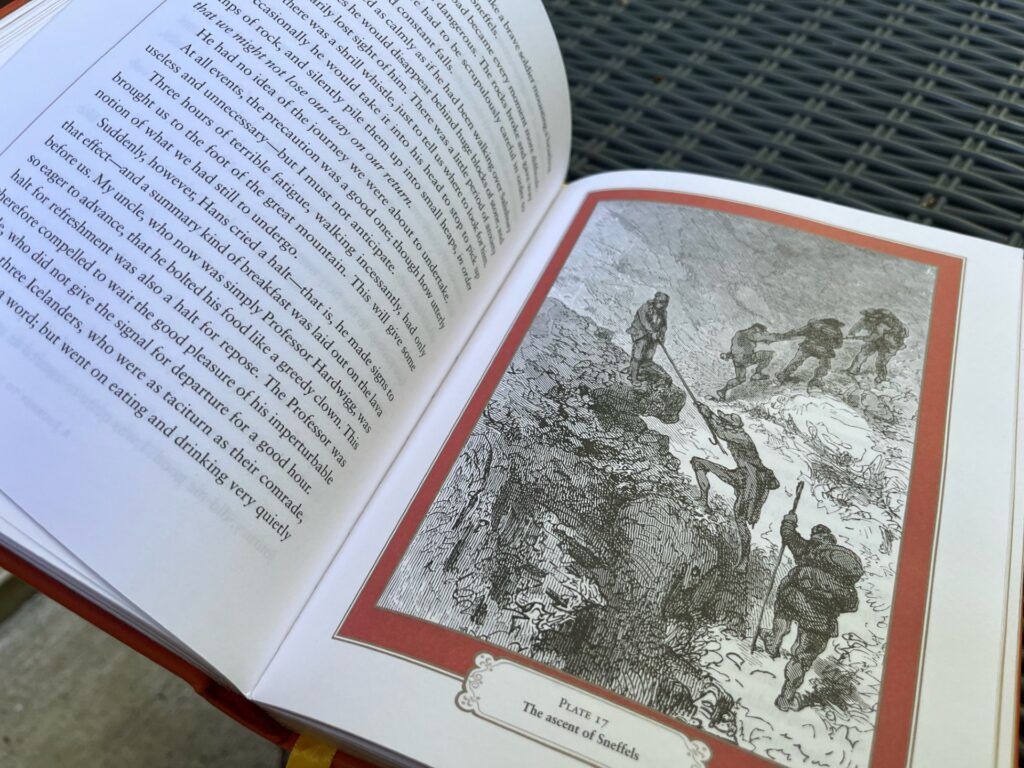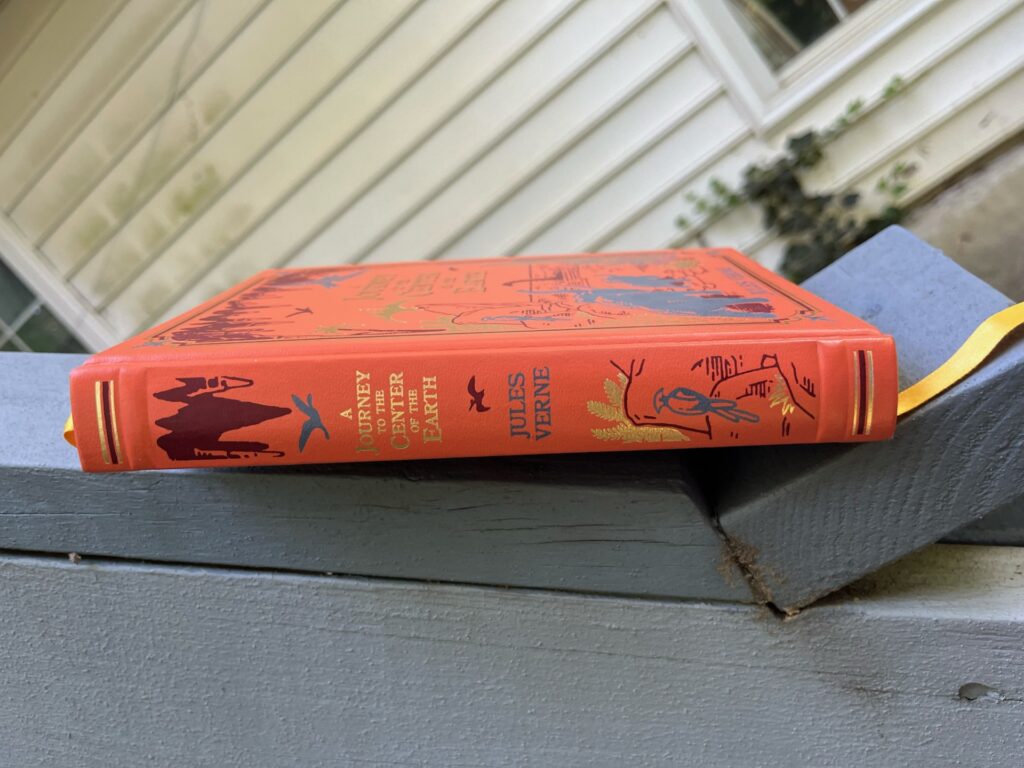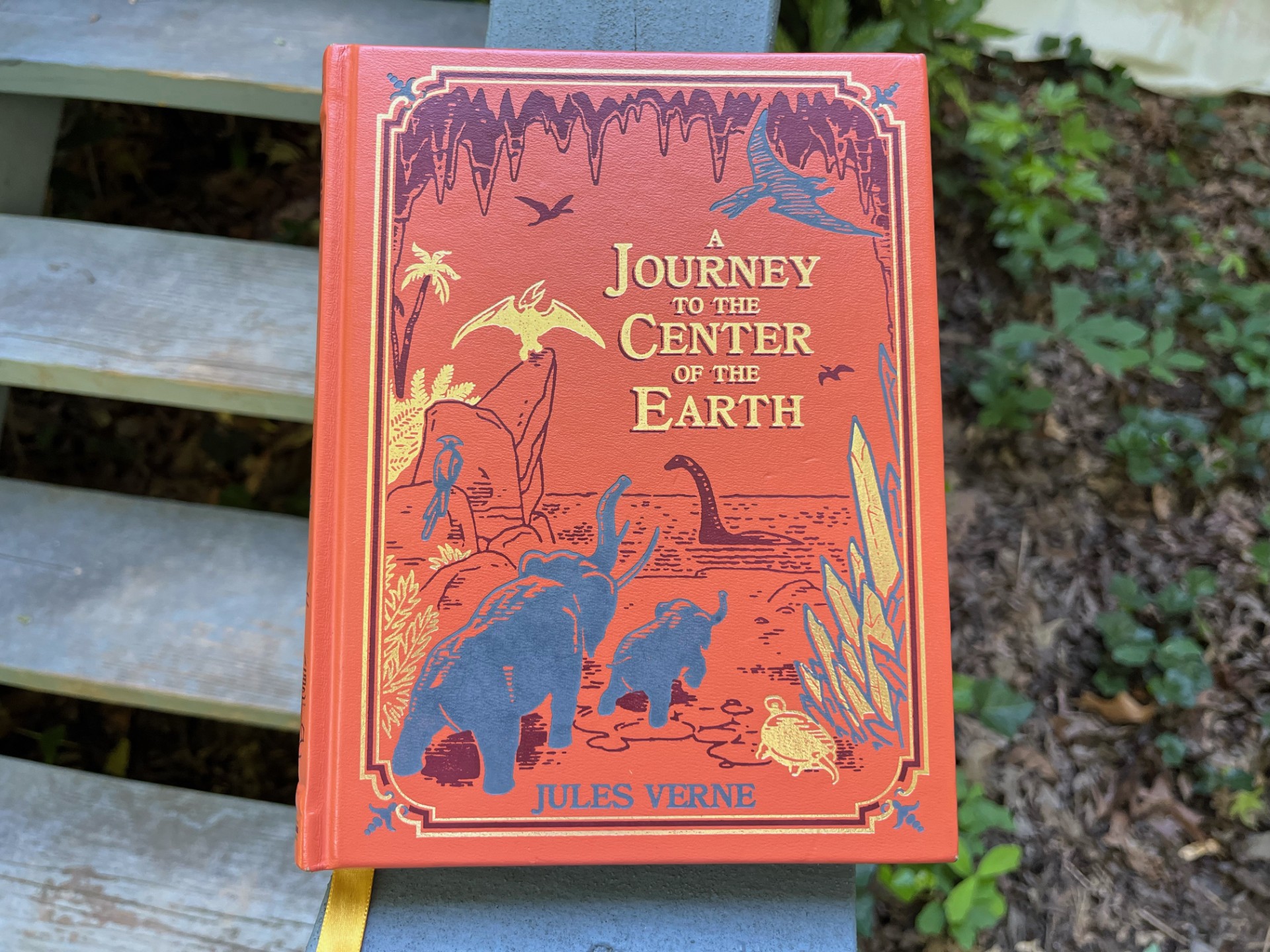I am going to admit it, right off the bat. This book was a bit of a challenge for me to get through. Not because it was super dense or hard to understand, but for someone who is not very geologically inclined it did not strike my interest areas as much. It was also not written in a manner structured to keep me desperately engaged. However, this book was monumental in its time and records some of the first thinking that has developed into our scientific society today. I realized that because of its impact on our world, it probably deserved a little effort.
Synopsis
The book is written from the perspective of a young man who is apprenticed to his uncle, the great Professor Hardwigg. They share an incredible interest in science, specifically geology. His uncle is connected with several scientists and is very passionate about the subject. One day he comes home with a book written by a famous alchemist who lived some four hundred years ago. In the book he finds an encrypted message which he decides it is of utmost importance to translate. Once decoded, the message reads as such:
Descend into the crater of Yokul of Sneffels, which the shade of Scartaris caresses, before the kalends of July, audacious traveler, and you will reach the center of the earth. I did it.
Arne Saknussum
The Professor decides that this means that if you enter the dormant volcano named Sneffels, which lies in Iceland, there is a path that can lead you to the center of the earth. He holds to a belief that the earth’s core is not a burning furnace and is very hopeful at a chance to prove it, following the steps of the famous alchemist. And so, despite his nephew’s great fear about their journey they begin their attempt, accompanied by a paid Icelandic guide who seems to be perfectly stoic no matter the danger as long as he gets paid on time.

The journey is an extremely long and perilous one. They make many discoveries along the way. The further they go down, the closer to prehistoric times are the fossils they find. They even find a center of the earth’s world inhabited by living prehistoric creatures and what we might consider cavemen. They go through some harrowing experiences, at times going for days without food or water and getting separated from each other. They even face a terrible storm as they ride upon an underworld ocean. Sadly, when they are only a few miles from their destination, they get pushed back onto the outside earth by an erupting volcano.
A Few Disappointments
There were a few different things that I disliked about the book. I do not mean to be overly critical, but I honestly expected more from such a classic. First, I feel like the nephew, who was narrating, had an inconsistent character. He spends most of his trip dragging his feet, complaining about every little danger or inconvenience they face, and otherwise showing his lack of enthusiasm. Then, he suddenly is the most excited member of the team for their journey and persuades them to create an explosion, triggering the volcanic eruption.
They make it through unrealistic trials completely unscathed. Towards the beginning of the book, they run out of water. Somehow, they manage to make it five or so days without water, spending every waking minute hiking strenuously. As soon as they receive fresh water, they are completely restored to good health. A similar thing happens later with food. At one point the nephew gets lost on his own for four days and ends up falling a great distance and gaining a head injury. Despite this, he can continue their exhausting journey the very next day. They even get erupted out of a volcano on a sea of lava without gaining any serious injuries.

The discovery of an entire civilization and ecosystem far below the earth’s core is completely glossed over. They miraculously come across plants, animals, great monsters, and even primitive men on their journey. This is something that other scientists had never even imagined. And yet, they spend almost no concern or thought on these creatures. This whole new world is nothing but an interesting note they put in their journals. Instead, the focus stays on the temperature of the earth’s core, which seems a waste with the incredible hypotheses the author presents.
Probably the most disappointing part for me was the anti-climatic finish. The entire journey is spent on trying to get to the very center of the earth. This is pursued far over the discovery of an underground world or other species of men. And yet, as soon as they get close to their goal, they get erupted out. The book then finishes by saying that they received great recognition for attempting the journey. After all that build-up, they never even make it!
Reflecting the Times
Journey to the Center of the Earth came out in 1864. This was during a tumultuous time in the world. Five years before this, Charles Darwin’s Origin of Species was published. You can see these new views reflected in the novel. As they move through the different fossil levels of the earth, the nephew testifies to seeing more and more primitive creatures as they go along. They even meet some of these species, who modern species they claim have developed from them.
This is interestingly combined with the reserved and somewhat Christian perspective someone from northern Europe would have been expected to have. God is mentioned several times throughout the book. They still have a very clear sense of man’s separation from beast it seems, except for when they come across a neanderthal. This shows the slow transformation science was undertaking.

We also see the growing interest in action, romance, and adventure-related subjects in literature. What a hundred years ago might have been thought of as cheap or unorthodox was now the workings of a classic book. We see a fictional story in an imaginative place being written about, as opposed to the seven deadly sins or various home remedies. However, the book is completely immersed in scientific facts and commentary about their journey, almost as if he was trying to teach using a fictional story!
While this book was not my favorite read, I can see its importance in light of history. It is an unwitting recording of a time period in which our knowledge and perspective of science completely shifted. It captures the moment when science went from philosophy to experimentation. It shows when we separated faith and knowledge. And it shows the slow shift in which reading became a way to be entertained, not informed. A shadow of the things to come, it is a prophecy in itself.
“Science, my boy, is made up of mistakes, but they are mistakes which it is useful to make, because they lead little by little to the truth.”
